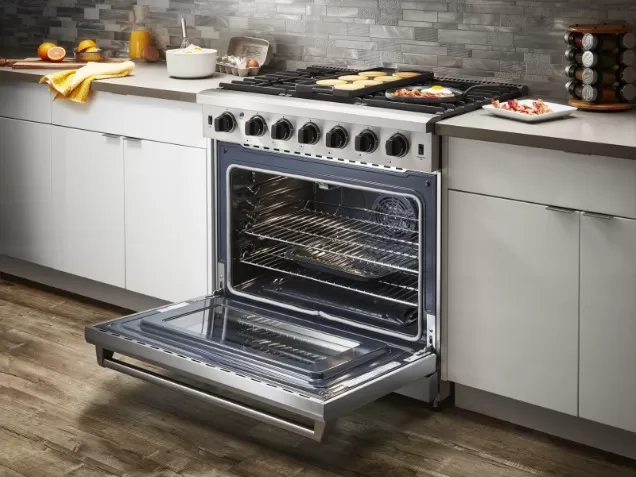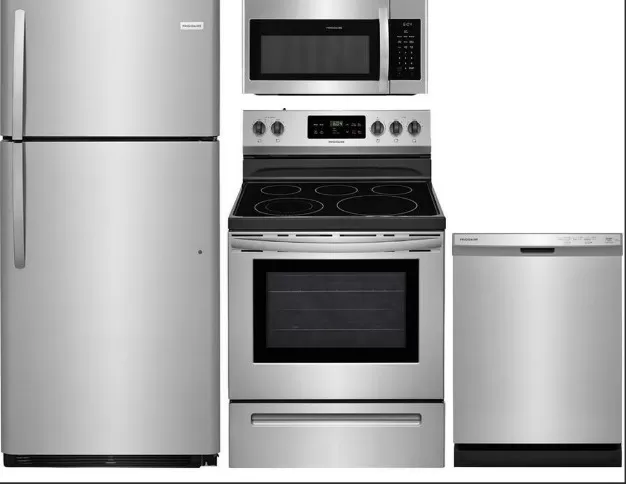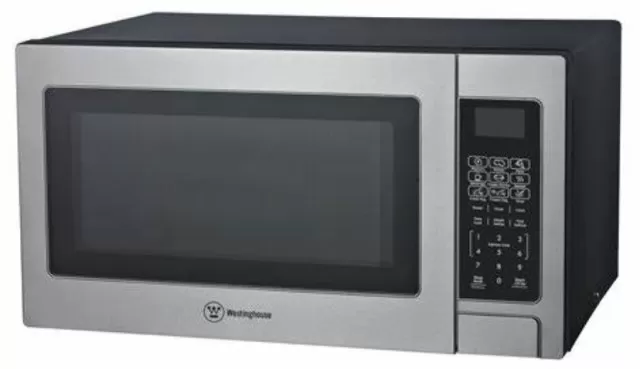Appliance Lifespan Guide: Know Your Major Appliances.For many, the age of household appliances rarely captures much attention—until a sudden breakdown forces our hand.
It’s a familiar narrative among homeowners: the mundane humming of everyday appliances that we take for granted, only to be awakened by the jolt of their abrupt malfunction. Yet, there are moments when homeowners choose to replace a significant appliance before its predetermined lifespan concludes—a remodel, perhaps, or an earnest desire to embrace the efficiency of an energy-conscious model. More often than not, the decision to invest in a new appliance surfaces only when the need becomes pressing, giving rise to the realization that understanding the approximate longevity of these domestic workhorses can profoundly shape financial planning and expenditure allocation.
In broad strokes, the majority of major household appliances tend to thrive for a span of approximately 10 to 15 years. This period, marked by years of service and unremarkable yet indispensable contributions, forms the baseline of our expectations. Yet, there’s an art to prolonging this lifecycle—an art encompassing prudent usage, unwavering hygiene practices, and the application of regular maintenance. Each deliberate step taken in this direction can serve as an agent of extension, expanding the appliance’s tenure well beyond the norm.
Varieties of Lifespans for Kitchen Ranges and Their Components

When it comes to the durability and longevity of essential kitchen appliances, the notion of “Ranges” takes center stage.
Among these indispensable culinary companions, the gas range stands out as a stalwart, boasting an impressive life expectancy that surpasses most others. According to insights provided by the National Association of Home Builders (NAHB), a gas range can faithfully serve your kitchen for a remarkable 15-year span.
However, its electric counterpart is no slouch in the longevity department either, trailing slightly behind with an expected lifespan of approximately 13 years.
Beyond the core range itself, another crucial player in the kitchen ensemble is the range hood.
This unassuming yet invaluable apparatus perches above the cooking range, diligently entrapping grease particles and culinary aromas that might otherwise linger in the air. This unsung hero of the kitchen possesses its own distinct lifecycle, boasting a commendable 14-year longevity on average.
In an age where appliances seem to evolve and change with rapidity, the reliable endurance of ranges and their associated components serves as a testament to their engineering and craftsmanship.
These projections not only offer insight into the expected timelines of these appliances but also underscore the importance of thoughtful selection and regular maintenance to ensure they continue to enhance our culinary experiences for years to come.
Evolution and Efficiency in Refrigeration
The realm of refrigeration stands as a dynamic arena, a constant whirl of innovation and progress, where the pursuit of energy conservation and spatial optimization reign supreme.
As the wheels of advancement turn ceaselessly, manufacturers diligently engineer ingenious methods to elevate the longevity of perishables while minimizing their environmental footprint.
When we open the door to the realm of refrigeration technology, a captivating transformation unfolds.
The stalwart standard refrigerators, dependable guardians of our food’s freshness, proudly declare an expected lifespan of around 13 years. Meanwhile, their more compact counterparts, valued for their space-saving attributes, gracefully serve for an average of nine years.
Yet, herein lies a compelling revelation: the financial fabric of the future can be woven through the threads of timely replacement.
The United States Department of Energy reveals a captivating truth—embracing a new refrigerator in lieu of clinging to the old could prove to be an economic masterstroke. Appliances adorned with the coveted Energy Star label, a symbol of efficiency and conservation, emerge as the stars of the show.
Such marvels of engineering shine bright, consuming a noteworthy 15 percent less energy than their non-qualified counterparts. Furthermore, they march triumphantly ahead, surpassing the benchmarks set by prevailing federal standards, guzzling a remarkable 20 percent less energy.
An astounding leap indeed, considering that they outshine the energy consumption of a refrigerator sold in the yesteryears of 2001 by an impressive 40 percent.
As we stand at the crossroads of choice, these revelations beckon us to embrace the future.
A future where refrigerators, no longer mere appliances but efficient companions, lead the charge towards Sustainable Living. A future where the preservation of food goes hand in hand with the preservation of our planet, and every cooling breath exhaled by these technological marvels whispers of a more resourceful, greener world.
Frozen Horizons: Unveiling the Longevity of Freezers

In the modern tapestry of home conveniences, the standalone freezer emerges as a steadfast ally, available in the forms of both upright and chest models.
These guardians of frozen treasures offer an oasis of chilled sustenance and delectable delights, extending their helping hand to households far and wide. As technology strides forward with each passing year, the realm of freezers too experiences its own metamorphosis, ushering in an era of enhanced efficiency and prolonged lifespans.
Picture this: a freezer that endures the test of time, a true testament to the marvels of contemporary engineering.
Today’s freezers, beacons of innovation, paint a vivid portrait of resilience and longevity. According to the wisdom shared by the National Association of Home Builders (NAHB), these frozen sentinels boast a remarkable potential lifespan of up to two decades.
Yet, as averages converge and realities settle, the typical trajectory spans around 11 years – a commendable testament to their endurance.
To embark on a journey towards optimal efficiency, consider a pivotal choice: the embodiment of convenience through an automatic defrosting cycle.
A freezer equipped with this ingenious mechanism orchestrates a symphony of thaw and chill, ensuring that frost never accumulates beyond a quarter-inch. Alternatively, a manual defrosting routine can serve as a time-honored ritual, a choreographed dance between you and your freezer, breathing new life into its chilling prowess on a regular cadence.
As we navigate the frozen expanse of possibilities, these insights beckon us to envision a world where our frozen companions stand the test of time with grace and efficiency.
With each frosty breath and every frozen treasure preserved, the freezer echoes a promise – one of extended existence and dependable service, a reminder that within its icy embrace lies not just sustenance, but a canvas for culinary adventures and a cornerstone of household harmony.
Revolutionizing Kitchen Cleanup: Unveiling the Lifespan and Efficiency of Dishwashers
In the grand symphony of domestic efficiency, the dishwasher takes the stage as a maestro of convenience, orchestrating a harmonious blend of time, energy, and water savings for homeowners.
This kitchen virtuoso promises a respite from the chore of hand-washing and a gateway to newfound leisure. Yet, like all performers, these mechanical virtuosos have their own curtain call, with an average lifespan of around nine years.
Despite the caveat of a relatively short existence, a silver lining glistens amidst the realm of dishwashing technology—a beacon of efficiency and environmental mindfulness.
Step into the spotlight, the Energy Star-certified dishwasher, a true embodiment of progress. This modern marvel redefines the narrative, demonstrating a profound respect for the planet’s most precious resource: water.
In a dazzling display of conservation, these champions of cleanliness utilize a mere 4. 25 gallons of water per cycle, a stark contrast to the older models that once guzzled over 10 gallons.
.
Embracing a newer dishwasher also unlocks a hidden treasure trove of energy savings, heralded by the Association of Home Appliance Manufacturers.
As we turn the pages of history, an average dishwasher from the year 1991 emerges as an energy-hungry giant, consuming more than double the electricity of its contemporary counterparts. The metamorphosis is nothing short of remarkable, a testament to the strides made in engineering and technology.
So, as we bid adieu to the old and welcome the new, we find ourselves at the crossroads of efficiency and innovation.
The modern dishwasher not only stands as a guardian of cleanliness but also as a steward of resources, embracing a future where every cycle whispers a promise of preservation and sustainability. In its embrace, we find not just a time-saving marvel, but a steadfast partner in the noble quest to harmonize household chores with environmental mindfulness.
Microwave Ovens: Culinary Wonders with a Time-Stamped Glow

In the realm of contemporary culinary enchantment, microwave ovens stand as a testament to human ingenuity, revolutionizing the landscape of food preparation with their swift and convenient wizardry.
Yet, like shooting stars across the kitchen cosmos, their brilliance is fleeting. A microwave’s presence, though transitory, ushers in a realm of rapid cooking possibilities, typically spanning from five to 10 years, with the grand average hovering at nine, as illuminated by the wisdom of the National Association of Home Builders (NAHB).
Within the confines of their compact chambers, microwave ovens harness the power of electromagnetic waves to breathe life into leftovers, defrost frozen dreams, and conjure meals with a mere press of a button.
Their prowess is undeniable, and their impact on modern gastronomy is immeasurable. However, this tale of convenience comes with a predetermined lifespan—a cosmic dance with time that eventually dims their once-brilliant radiance.
Though their temporal existence may evoke a sense of fleetingness, one can’t help but marvel at the symphony of science that unfolds each time the microwave door is closed.
As they weave their culinary spells, they remind us that within their brief presence lies a treasure trove of culinary exploration, a microcosm of innovation and flavor transformation.
So, as microwave ovens grace our kitchens with their ephemeral embrace, let us bask in the glow of their technological marvel while we await the next chapter of progress in culinary convenience.
In their brief yet impactful sojourn, they illuminate not only our meals but also the ever-advancing tapestry of human discovery.
*The information is for reference only.